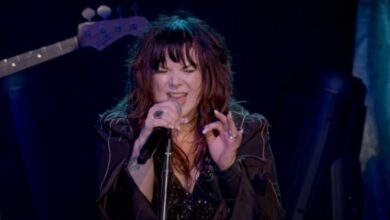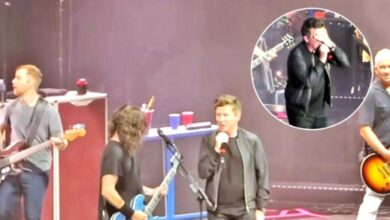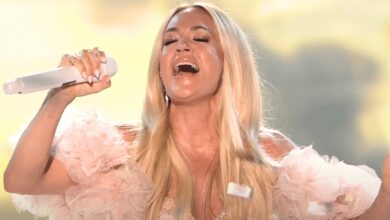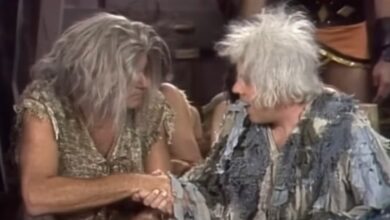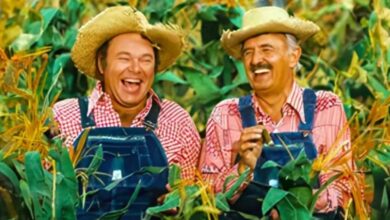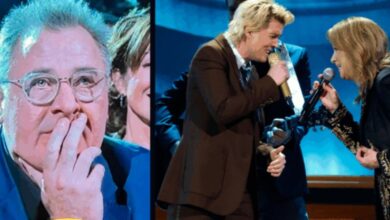This Dance Was a 1950s Phenomenon, Do You Recall It Now?
The explosion of dance crazes in February 1958 brought a vibrant energy to American high school gyms and sock hops, capturing the carefree spirit of the era and embodying the early days of rock ‘n’ roll. Among these dances, “The Stroll” emerged as a standout, quickly becoming synonymous with youthful fun and spontaneity. Originating in African American communities, “The Stroll” gained widespread popularity through television, especially on Dick Clark’s “American Bandstand,” where teenagers nationwide eagerly adopted the dance at local gatherings.
“The Stroll” transcended its role as a mere dance; it became a cultural phenomenon reflecting the social dynamics of the 1950s. The dance involved two lines of participants facing each other, creating an aisle down the middle. Couples would take turns strutting down this aisle in rhythm with the music, adding personal flair to their movements. This format allowed for both group participation and individual expression, resonating deeply with youth who were beginning to assert their identities in a rapidly changing society.
Accompanying this dance was the song “The Stroll,” performed by the Canadian vocal group The Diamonds. Known for their smooth harmonies and catchy doo-wop tunes, The Diamonds played a crucial role in bringing “The Stroll” to a broader audience. Their version of “The Stroll” was more than just a hit; it became the anthem of a cultural movement, encapsulating the joy and rebellious spirit of the time. The group’s lead singer, Dave Somerville, with his rich baritone voice, became the voice of the dance craze, guiding dancers with his melodic crooning.
The dance’s rapid rise to fame turned it into a staple at social events. Its appeal was widespread, bridging racial and social divides during a time of significant segregation in the United States. The Stroll’s simplicity made it accessible to many, while its inherent coolness made it irresistible. Teenagers flocked to dance floors in their best outfits, eager to participate in the latest trend and exude a confidence that mirrored the optimism of post-war America.
As “The Stroll” surged in popularity, it became emblematic of a generation’s desire to express themselves and enjoy the newfound freedoms of the 1950s. The dance’s presence on television and in music solidified its place in American pop culture, making it a memorable part of the decade’s social landscape.
The widespread visibility of “The Stroll” was largely due to its frequent appearances on “American Bandstand,” where Dick Clark’s popular show introduced the dance to a national audience. The show’s platform allowed teenagers from across the country to see the dance performed and inspired them to replicate it at their own social gatherings. This media exposure played a pivotal role in the dance’s rapid adoption and enduring popularity.
“The Stroll” also reflected the broader cultural shifts of the 1950s, a decade marked by significant social change and the rise of youth culture. The dance’s simple yet engaging format allowed teenagers to express themselves in a communal setting, fostering a sense of belonging and camaraderie. The fun and inclusive nature of the dance mirrored the optimistic spirit of the time, as America emerged from the post-war era with a renewed focus on leisure and entertainment.
Beyond its immediate success, “The Stroll” left a lasting legacy in the history of American dance. It set a precedent for future dance crazes, demonstrating how a simple and catchy dance could capture the collective imagination of a generation. The dance also paved the way for other line dances and social dances that would follow, contributing to the evolving landscape of American popular culture.
The song “The Stroll” by The Diamonds, with its upbeat rhythm and catchy melody, continued to be associated with the dance craze for years. The group’s distinctive sound and the song’s catchy lyrics helped cement its place in the cultural memory of the 1950s. The Diamonds’ contribution to the dance’s popularity underscored the close relationship between music and dance, and how they together shaped the entertainment landscape of the time.
